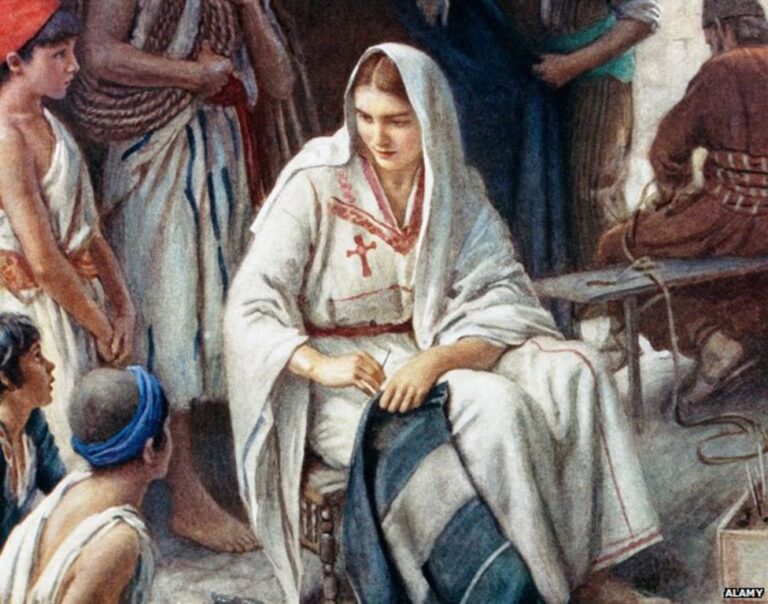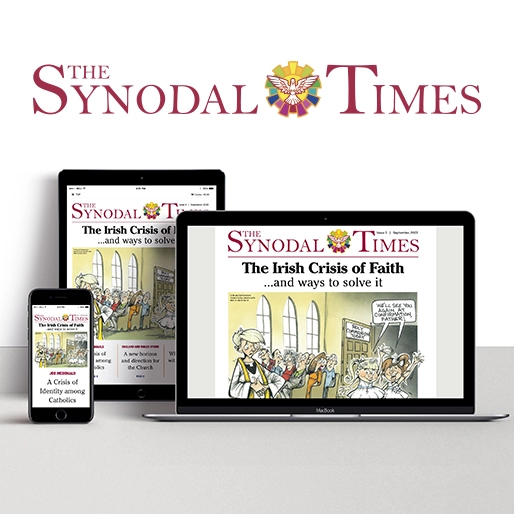At the Synod in October, there will be 70 non-bishop members with the right to vote, half of whom will be women. In any other context, this tiny gesture would be seen as tokenism. However, within the Church, it is revolutionary and (probably) irreversible.
It does raise the question of the role of women within the institutional Church, already firmly on the Synod agenda. Once, we were forbidden to talk about the ordination of women and now we are obliged! Working as a biblical scholar, perhaps the following observations may shed a little light.
Firstly, ministries evolved in the first 100 years of Christianity and can be traced in the Pauline churches. Paul lived in the period of charism (ad 30-60). He himself had women fully involved in ministry, as a glance at Romans 16 makes clear. This is consistent with his teaching that “there is no longer Jew or Greek; there is no longer slave or free; there is no longer male and female, for all of you are one in Christ Jesus” (Galatians 3:28).
Let’s pause for a moment and name these women: Phoebe, deacon (it means local leader) of the church in Cenchrae;) Prisca (a co-worker of Paul) and Junia (a relative of Paul, called by him an apostle, no less).
Then follow a series of names: Mary, Tryphaena, Tryphosa and the beloved Persis. These are all described as “working hard in the Lord”, an expression meaning they were teachers or evangelists.
Silent
Obviously, these women were not expected “to be silent in Church”! (The non-Pauline interpolation of 1 Corinthians 14:34-36 — commonly recognised as such — is an attempt to make the great apostle say what he would never, ever have said. It was probably inserted when the collection of his letters became available.)
In the next generation — the time of “memory”, roughly ad 60-90 — a more conservative voice found expression, evident in the attitude to the household and to slavery in the deutero-Pauline letters, Colossian and Ephesians. The time of institutionalisation (ad 90-120) saw a greater conformity to the expectations of society, as we can see in 1 and 2 Timothy and Titus, in terms of slavery and the household.
These reactionary letters, again not from Paul, excluded women from even speaking in church — bearing in mind as always that there is no need to forbid what is not happening! At this point, the three-fold ministry of overseer (episcopos, later bishop), elder (presbyteros, later priest) and servant (diakonos, later deacon) began to emerge.
Secondly, this evolutionary view means that the three-fold ministry that did eventually emerge does not go back to the historical Jesus. In fact, the historical Jesus was focused on the restoration of Israel (found frequently in Matthew).
When the later Church did eventually break from the mother religion, it was a real struggle, in part because there was no teaching or expectation from Jesus on The Way as a separate religious entity. If this is true, the consequences are significant.
Did Jesus ordain only men? In reality, Jesus ordained nobody — it is anachronistic to read back the much later evolution into the life and ministry of Jesus. The question of who he ordained is, as a result, more open than we might have imagined! Such an evolutionary view is possible only if we believe in the continued work of the Spirit, even today.
Thirdly, the long tradition of the Church is that only men can be ordained. Tradition, we may say, has both form and content. The form is clear, even if no one in the past ever considered that women could be ordained.
What about the content? What is the meaning of confining ordination to males? Salvation If confining ordination to men is part of the “economy of salvation” and if, as we know, that everything in the economy of salvation promotes the values and vision of the Kingdom of God, then, how does the exclusion of women promote the Kingdom? Almost any answer to that question will be subject to very harsh critique.
Fourthly, if I may ask a bald question, can a woman represent a man? The new(ish) teaching of the Petrine and Marian dimensions of Church does not help here at all. In that teaching, the “giving” Church is represented by the masculine principle and the “receiving” Church represented by the feminine principle.
This is dangerous ground. Pushed to the extreme, then all the males in the Church should be ordained and all the laity should be women! The Bible teaches otherwise. All human beings are created in the image and likeness of God, without distinction of gender (Genesis 1:26-27).
Paul developed that teaching in the light of Christ in Galatians 3:28, quoted above. All human beings are in the image and likeness of God; all Christians are in the image and likeness of Christ. To say that a woman cannot represent Christ would undermine our fundamental understanding of Baptism and the condition for ordination is not gender but precisely faith and Baptism.
Finally, can the Church develop and grow in its teaching? The answer has to be yes. The Catholic Church has a doctrine of the development of doctrine. We can see this in the sacraments, the Eucharist, Matrimony, Mary, social teaching, inter-religious dialogue and, not least, ecumenism (which started outside the Catholic Church). The Church is always growing and responding to the urgings of the Spirit.
Frozen
There is no evidence that such evolution has somehow stopped, frozen in some idealised moment in the past. We don’t have to think of ourselves as at the end of Christianity — we are at the very start, with barely 2,000 years gone by!
Imagine for a moment that women could be ordained. What core doctrine of the faith would change? Trinity? Incarnation? Salvation? Grace? Sacraments? No great doctrine would be threatened; instead we would have an enrichment of ministry, a true development of doctrine.
What is there to fear? There is also the question of credibility. Any institution which systematically excludes women from its structures has a major problem of credibility in our society today. Why add another block to faith?
Again, the real issue is not so much the provision of priests, important though that is. The real issue is hearing the voice of women, right through the Church, not by grace and favour (with due respect to Pope Francis) but as of right.
As a retreatant said to me recently, women are the glue holding the Church together, both in numbers attending and in terms of ministries already being exercised. The Synod, over the next two years, represents an opportunity to listen again and again to what the Spirit is saying to the churches.
Let’s hope the Spirit is heard!
Dr Kieran O’Mahony is an Irish Augustinian friar and biblical scholar, who serves as the academic coordinator for the Archdiocese of Dublin. He serves as a priest in Donnybrook Parish.



